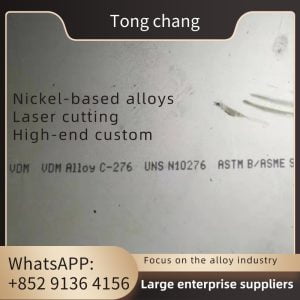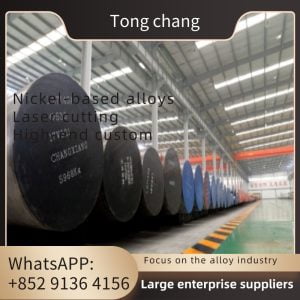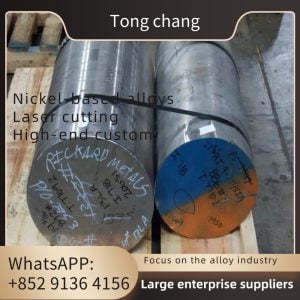| Standard: | ASTM A516/ASME SA516 | Material: | GR.70N |
|---|---|---|---|
| NDT: | UT, PT | Process: | Forging |
| Size: | According To The Client’s Requirement/DRAWING | Application: | Heat Exchanger, Boiler, Pressure Vessel, Chemical Reactor, Power Plant, Energy , Petrochemical |
| High Light: | Heat Exchanger Carbon Steel Tubesheet, GR70N Carbon Steel Tubesheet | ||
GR.70N CARBON STEEL TUBESHEET PLATE ASTM A516 HEAT EXCHANGER PART
Overview
A carbon steel tubesheet is a component used in heat exchangers and pressure vessels. It is a flat plate with holes drilled or punched to accommodate the tubes that pass through it. The tubesheet provides support and acts as a barrier between the fluid inside the tubes and the surrounding environment. Carbon steel is commonly used for tubesheets due to its strength, durability, and cost-effectiveness. It is important to note that carbon steel tubesheets may require additional corrosion protection measures, such as coatings or linings, depending on the application and operating conditions.
SA516 Gr.70N refers to a specific grade of carbon steel used for tubesheets. SA516 is a normalized carbon steel plate specification, and Gr.70N indicates that it has a minimum tensile strength of 70,000 psi (485 MPa) and is normalized. The "N" designation signifies that the material is normalized, which involves heating the steel to a specific temperature and then cooling it in air to improve its mechanical properties.
A tubesheet made from SA516 Gr.70N would be suitable for applications requiring a strong and durable material that can withstand high pressure and temperature conditions. It is commonly used in the construction of heat exchangers, boilers, and pressure vessels. However, it is important to consult the specific design and engineering requirements for your application to ensure that SA516 GR.70N is the appropriate material choice.
The most common types of holes experienced in tube sheet dilling are triangular, rotated triangular, square and rotated square. Each hole pattern presents its own dilling challnges. See typical pattern types below:
Mechnical property
| Yield strength (≥Mpa) | Tensile strength (Mpa) | Elongation in ≥,% | |
| 260 | 485-620 | 200mm | 50mm |
| 17 | 21 | ||
Chemical composition
| Main chemical elements composition of A516 Grade 70 | |||||
| Thickness(mm) | C | Si | Mn | P | S |
| T≤12.5 | 0.27 | 0.13-0.45 | 0.79-1.30 | 0.035 | 0.035 |
| 12.5<T≤50 | 0.28 | ||||
| 50<T≤100 | 0.30 | ||||
| 100<T≤200 | 0.31 | ||||
| T>200 | 0.31 | ||||
Tubesheet Application:
Tube Support: Tubesheets provide support and stability to the tubes within a heat exchanger or pressure vessel. They hold the tubes in place and prevent them from sagging or vibrating during operation.
- Fluid Separation: Tubesheets act as a barrier between different fluid streams within a heat exchanger. They ensure that the fluids remain separate and do not mix, allowing for efficient heat transfer or separation processes.
- Tube Sealing: Tubesheets create a tight seal around the tubes, preventing any leakage between the fluid streams. This is crucial for maintaining the efficiency and integrity of the heat exchanger or pressure vessel.
Heat Transfer: In heat exchangers, tubesheets facilitate the transfer of heat between the fluid inside the tubes and the surrounding fluid. The tubesheets help optimize heat transfer efficiency by ensuring proper contact between the tubes and the surrounding medium.
Pressure Containment: In pressure vessels, tubesheets play a vital role in containing the high-pressure fluids or gases. They are designed to withstand the internal pressure and prevent any structural failure or leakage.








